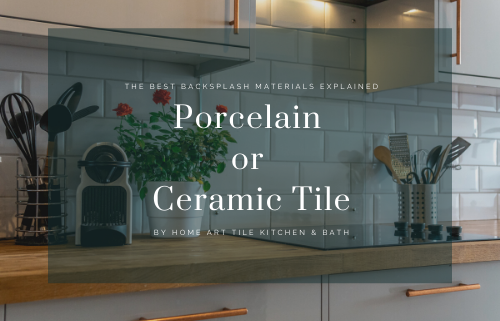Porcelain vs Ceramic Tile: Best Kitchen Backsplash Materials Explained
Porcelain vs ceramic tile — what should I choose for my new kitchen backsplash in 2024?
The dilemma of choosing between porcelain and ceramic tile when remodeling a kitchen is common among homeowners. Both ceramic and porcelain tiles feature a plethora of attractive, beautiful designs, styles, colors, and finishes, and both bring many unique benefits to the kitchen space. Questions like what is better, which one is more durable and practical, and which one will last longer will surely pop up when you enter your local tile showroom. The options before you are spectacular, gorgeous, and inspiring, but they will also seem endless and a bit overwhelming.
To make sure you make a thoughtful and well-informed decision, to save your time, and to make the process of choosing the best tile for kitchen backsplash easier, we will present and compare porcelain vs ceramic tiles for your home.
Contents
- 1 Porcelain Tile Characteristics, Advantages, and History
- 2 Ceramic Tile Characteristics, Advantages, and History
- 3 Porcelain vs Ceramic Tile: Main Differences
- 4 How to Choose the Right Backsplash Design
- 5 2024 Ceramic Tile Trends
- 6 2024 Porcelain Tile Trends
- 7 Ceramic or Porcelain Tile for Kitchen Backsplash FAQs
- 8 Let Us Help You Decide Between Porcelain vs Ceramic Tile in 2024
Porcelain Tile Characteristics, Advantages, and History
Porcelain tile features guarantee many advantages to those who decide to use it in their home or commercial space, whether on walls or on floors. Non-porous, highly resistant to both low and high temperatures as well as to flame and freeze, extremely durable, unyielding to ruptures and damages, various chemicals and acids, porcelain tile is one of the strongest and most substantial materials to use in any home, especially in those rooms that sustain a lot of activity during the day.
Just as they are tough and superior in resistance to flame, frost, and water, they are also very easy to clean and maintain. Easy maintenance and also its resistance to bacteria and mites are other important reasons why porcelain tile is vastly used and generally loved in numerous commercial and residential locations, for multiple uses, where hygiene is valued.
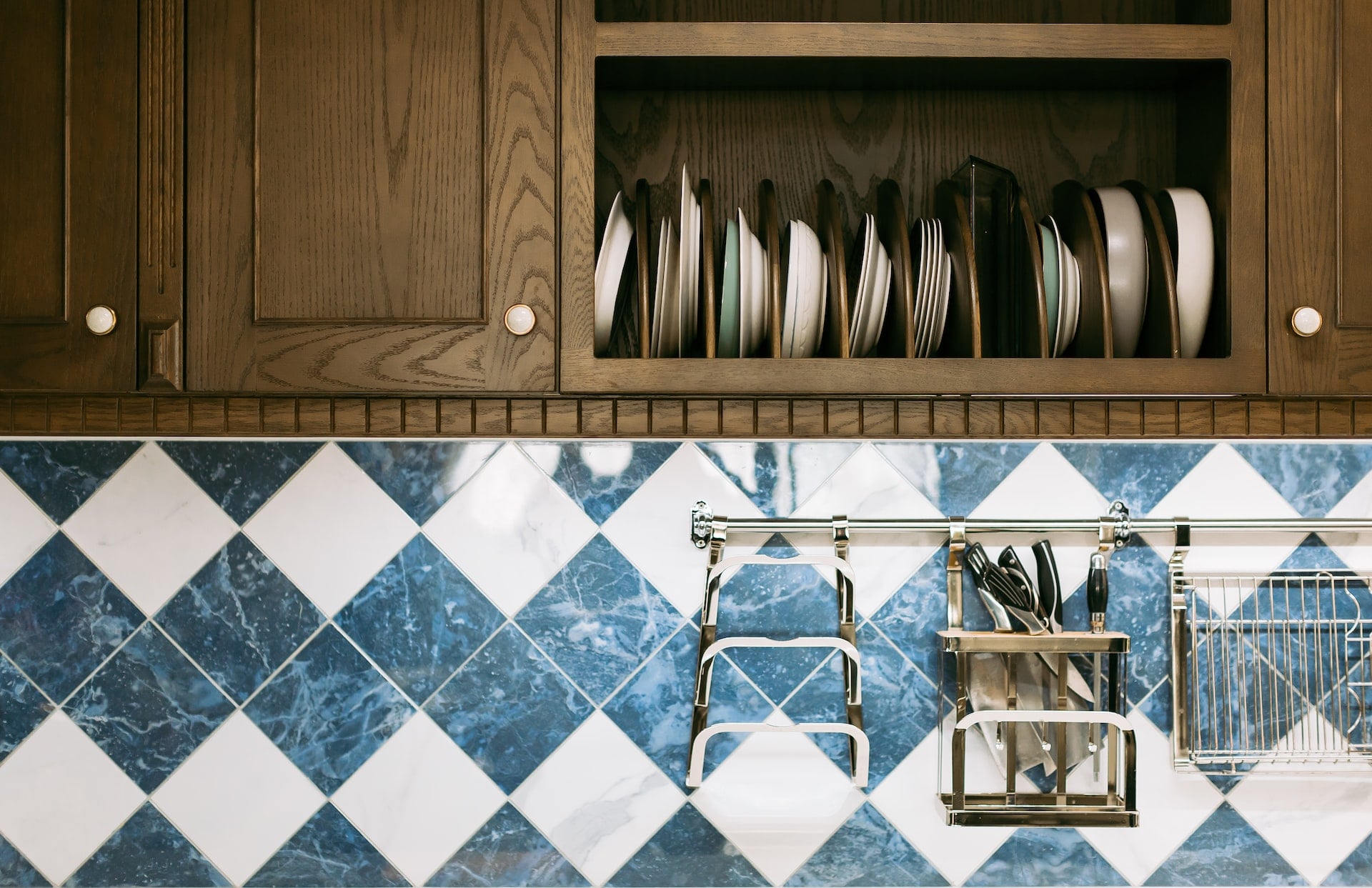
And last but certainly not least — aesthetics of the porcelain tile make it more than a suitable material for a number of uses in many different venues. Schools, museums, shopping and wellness centers, bathrooms and kitchens, hallways, industrial spaces, and commercial and business areas. Porcelain tile can remarkably mimic natural stone but is also manufactured in many other popular, trendy, and attractive designs. It can be found in many different styles and colors so that it can suit different needs and space requirements.
When it comes to the history of porcelain tiles, it’s important to mention that the first ones were made and used in China, approximately in the 15th century, in the Porcelain Tower of Nanjing which is now mostly ruined. Although terracotta material was mostly used in the past, porcelain tiles were used here for walls.
Ceramic Tile Characteristics, Advantages, and History
Very popular for various uses in both homes and commercial areas, ceramic tiles are one of the most frequently used tiles ceramic tiles ever. They come as glazed or unglazed, in a wide assortment of colors and styles, suited for many kitchen and bathroom designs. With many outstanding qualities and characteristics and various uses, ceramic tiles will protect and beautify any home, residential building, or commercial and office space.
Being highly resistant to water and spills, ceramic tiles are frequently and highly effectively used in areas where water is used on an everyday basis, like kitchens and bathrooms. Kitchen and bathroom floors and walls benefit largely from ceramic tiles as they are superior at protecting these areas from water, humidity, moisture, and mold.
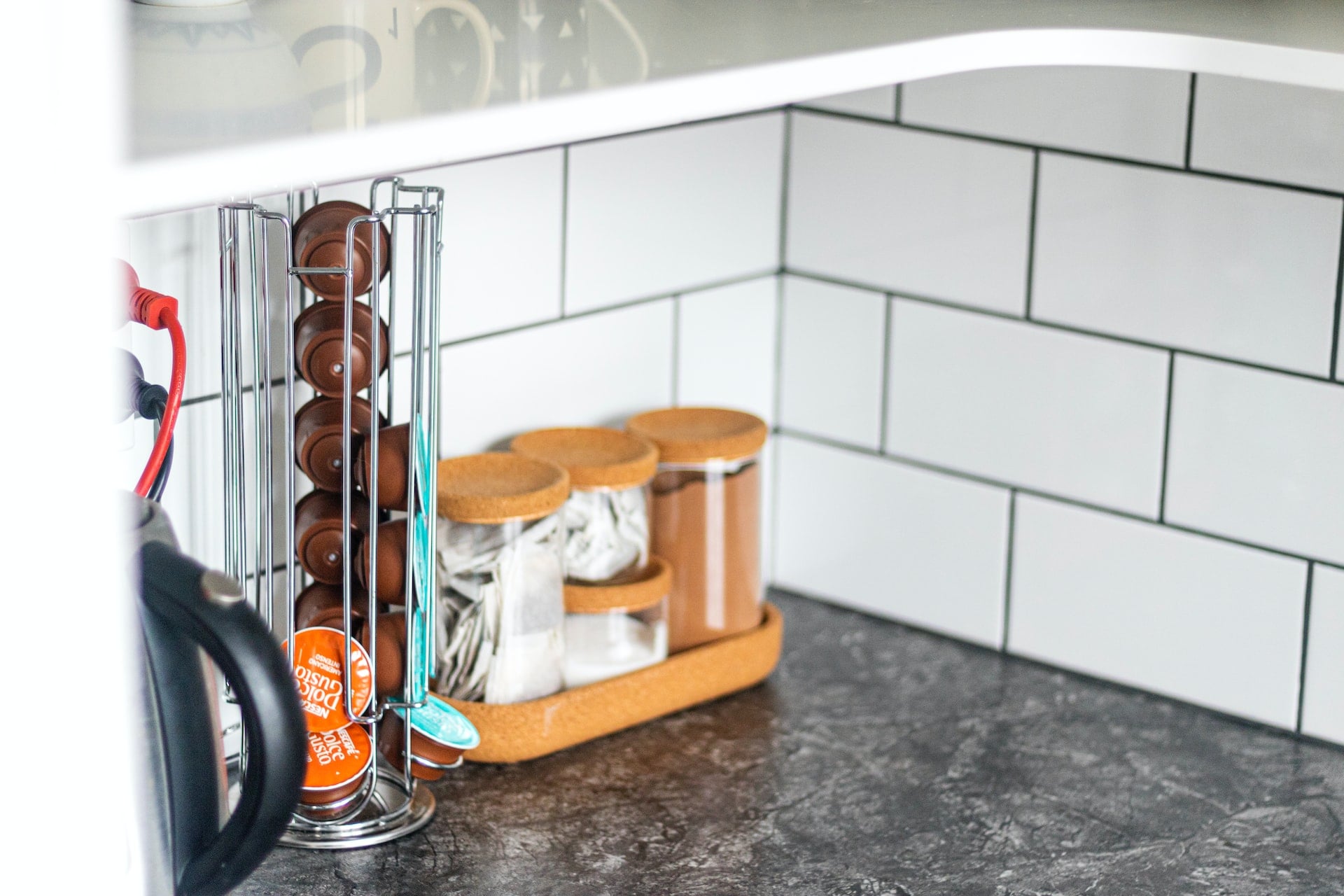
Another important characteristic of ceramic tiles is their powerful durability. If you’re set to find tiles that will last you for many years to come, ceramic tiles put your mind at ease, being one of the most durable tile materials on the market. Although it is not often mentioned, ceramic tiles are slip-resistant, which makes them especially suitable for floor coverings anywhere in any residential or commercial property. When it comes to flooring and making it functional, pretty, easy to clean, and, above all, safe, ceramic tiles are one of the most effective solutions.
Ceramic tiles are also very easy to clean and maintain and resistant to freezing temperatures which makes them suitable for outdoor applications. Their cost is more convenient, which brings them very frequent use in a variety of indoor and outdoor applications.
When it comes to the history of ceramic tile, it is believed that the first ceramic tiles were made in ancient Egypt, while other experts believe that ancient civilizations of China and Mesopotamia fired the first ceramic tiles.
Porcelain vs Ceramic Tile: Main Differences
When choosing between ceramic vs porcelain tile, consider the main differences between these two quality materials in water resistance and water absorption, durability and expected lifespan, maintenance, ease of installation, cost, style, and more.
Which is more expensive, ceramic or porcelain tile? What’s better, porcelain or ceramic tile? These questions pop up whenever a kitchen update or a kitchen remodel is planned and include adding or replacing a backsplash. Let’s remove any doubts you may have and answer the most common questions when looking into the best tile for kitchen backsplash in choosing between porcelain tile vs ceramic tile.
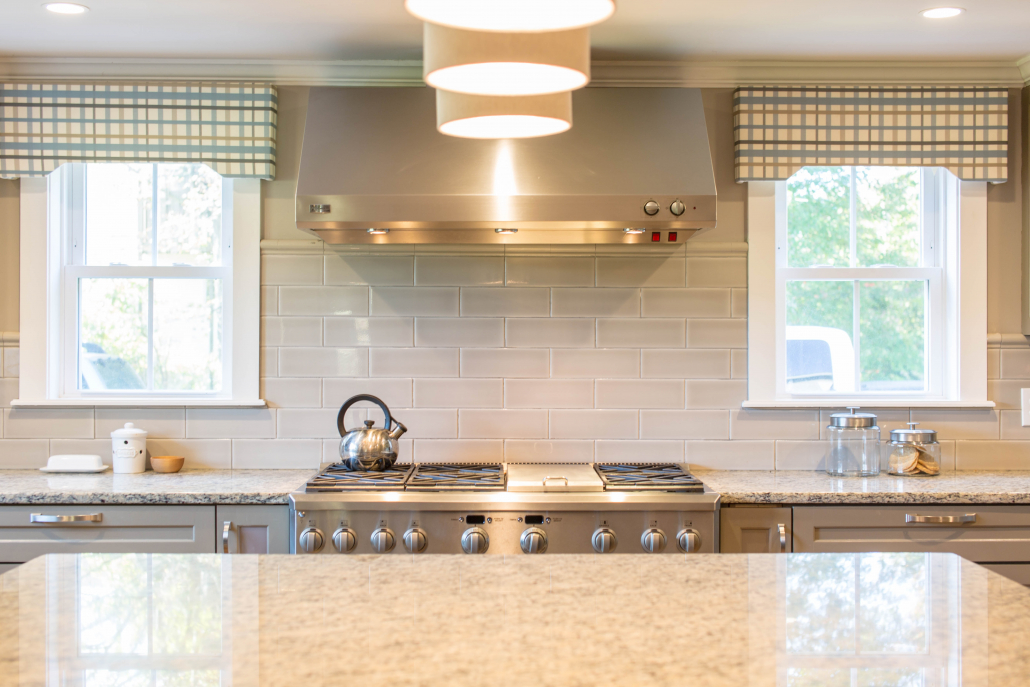
Porcelain vs. Ceramic Tile Backsplash
Porcelain vs Ceramic Tile Water Resistance
One of the most important characteristics of kitchen backsplash materials is water resistance. Both ceramic and porcelain tiles are highly liquid and moisture-resistant. Porcelain tiles are considered to be a bit less porous denser and heavier than ceramic tiles because of the way they are crafted. However, ceramic tiles are also perfect for resisting water and other liquids. As long as the tile is installed properly, with high-quality grout, both options will protect the kitchen wall perfectly and stand unchanged for years to come.
Because it is built slightly differently, to be heavier and denser than ceramic tile, porcelain tile is more resistant to water and spills. This is why it is recommended as a first and superior choice for use in rooms where moisture and frequent use of water is expected. But at the same time, porcelain tiles are recommended for outdoor use preferably in mild climates.
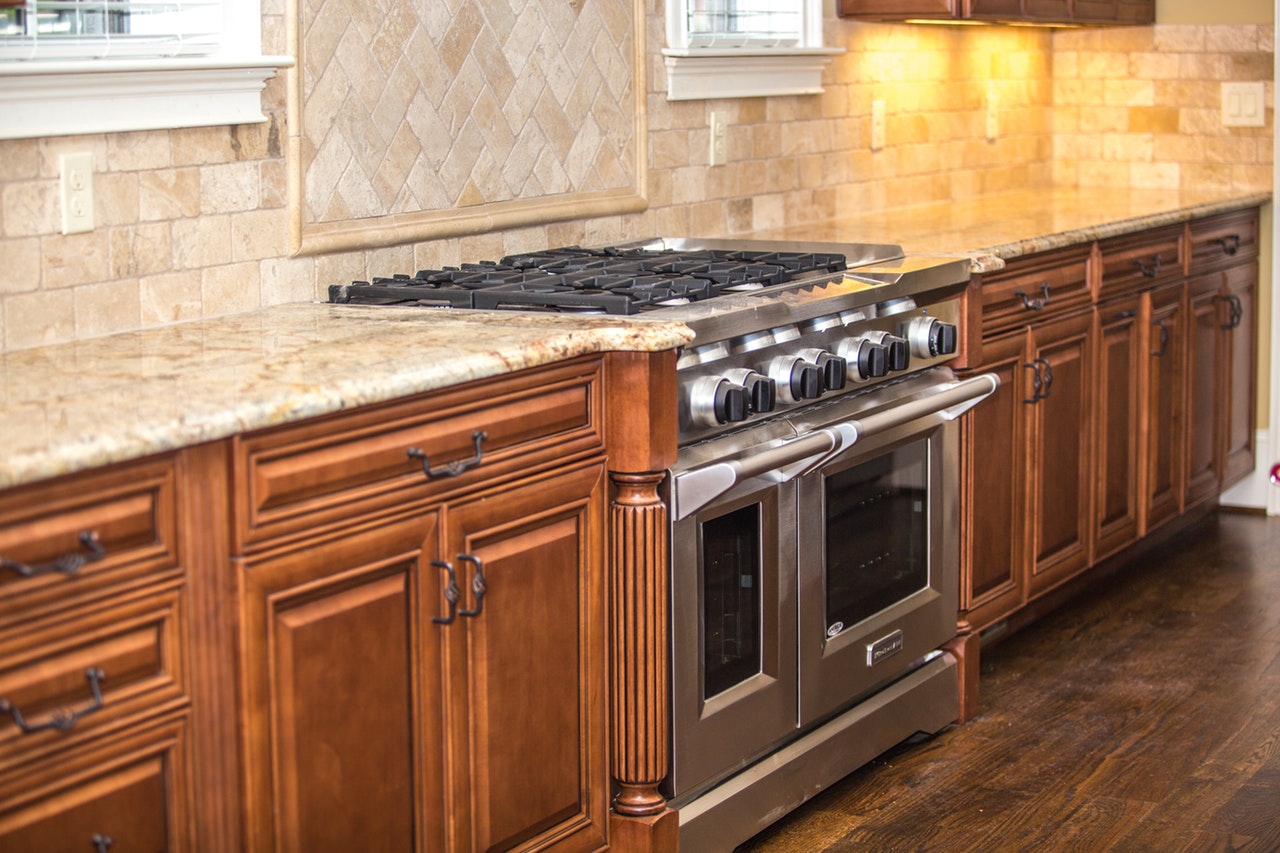
Porcelain vs. Ceramic Tile Comparison
Comparing ceramic vs porcelain tile water resistance for kitchen backsplash use, it is noticeable that ceramic tile is somewhat more receptive to water and liquids. This can be minimized by choosing a ceramic tile with a glazed coating. With ceramic tiles that have a glazed finish and are in perfect condition, water resistance is brought to the maximum. This is the case whether we’re talking about ceramic or porcelain tiles.
However, when looking for glazed ceramic or porcelain tiles, don’t expect that their backs will have a glazed finish. The glaze finish will be only on their front sides, where it is expected that the tile will come into contact with water. Although unglazed parts of the tile are not able to resist water, it is also the fact that the backside and sides of the tile will not come into contact with water under any circumstances thanks to the grout that is applied.
See hoe ceramic tiles work in extremely wet conditions — in a bathroom and shower, and discover our ceramic tile shower ideas.
Porcelain or Ceramic Tile Durability
Whether you are looking for the best tile to use in a residential or commercial environment, porcelain tile is considered a better option when it comes to durability. It’s denser than ceramic tile, therefore it’s less likely to crack, have any other issues, and will be able to withstand whatever comes it’s way. For example, if you or anyone in your family happens to slightly damage or chip a porcelain tile on your backsplash or anywhere else in your home, you’ll see that there won’t be any visible damage to it — the color of the tiles will continue through its body as if nothing happened.
On the other hand, if you happen to chip a ceramic tile, the color from the top of the face of the tile will be discontinued — and another color that is underneath will show. This happens because ceramic tiles are less dense and therefore are easier to break or crack. So, if you happen to prefer a ceramic vs porcelain backsplash, make sure the ceramic tiles you’re getting are glazed. If not, then think about the possibility of sealing your ceramic tile backsplash — not just the grout surface but the entirety of the backsplash.

However, when we say that porcelain tile is more durable than ceramic tile, it is important to highlight that this trait is more important for high-traffic areas and flooring. The kitchen backsplash doesn’t have to be as sturdy as the kitchen floor, for example. Porcelain tile backsplash and ceramic tile backsplash tile are both durable and won’t crack if maintained properly. If you decide to go with a ceramic tile, make sure to choose a glazed finish variety because it’s more water-resistant and more durable than an unglazed option.
However you decide to go when thinking between porcelain tile vs ceramic tile for your kitchen backsplash when it comes to durability, you should know that a quality installation and proper care will prolong the lifespan of both porcelain and ceramic tile to make them last and serve you for several decades.
Ceramic vs Porcelain Tile: Water Absorption
According to the findings of ASTM, the American Society for Testing and Materials, section C373, porcelain tiles have a lower water absorption rate due thanks to their higher density. Tested by weighing the fired tile, boiling it for 5 hours, and weighing it again, it was found that impervious porcelain tile has less than 0.5 percent water absorption rate, with vitreous porcelain tile having 0.5 to 3 percent water absorption rate and ceramic tiles having 3 to 7 percent water absorption rate.
Both porcelain and ceramic tiles can be made to mimic natural stone or wood, but regardless of how they look, they will have the same water absorption rates as was found in these tests. Thanks to the glazing, body density, and design that goes throughout the entire piece of tile, porcelain tiles have lower water absorption rates and lower porosity and so are considered better for use in high moisture environments than ceramic tiles.
Learn more about one of the favorite backsplash designs that can come in ceramic or porcelain tiles — white subway tile backsplash.
Porcelain vs Ceramic Tile Maintenance
When it comes to maintenance, there doesn’t have to even be a dilemma — porcelain or ceramic tile. Both options for kitchen wall tiles are easy to clean and maintain. Porcelain tile has a natural stain which makes it water-resistant and very easy to clean. To keep it in perfect shape, simply clean it regularly to remove dust or debris. You can also use a pH-balanced solution to disinfect the backsplash area. Porcelain tiles on your kitchen backsplash will never require sealing on the entire surface of the backsplash but do consider sealing the grout area periodically for better protection.
Ceramic tiles are also great for cleaning and taking care of. Stains, dirt, and any liquid can be removed easily with a soft brush. If your ceramic kitchen backsplash consists of tiles that are not glazed, consider sealing the entire surface of the backsplash, not just the grout areas, like it is recommended with porcelain tiles. Sealing your unglazed ceramic tile backsplash makes it absolutely impervious to water and helps protect against chipping and any other damage.
But no matter what you choose when deciding on ceramic or porcelain tile for the kitchen backsplash, make sure to properly and regularly clean the grout between the tiles. This is possibly the most troubling area that needs a bit more effort to keep it looking new, clean, and fresh.
Ceramic or Porcelain Tile Installation
When it comes to porcelain vs ceramic tile backsplash installation, both types of tile are easily installed but still, there are some tiny differences. In general, ceramic tile is easier to install whatever the application is, wall or flooring because it is easier to cut as the material itself is softer and less dense than porcelain. On the other hand, porcelain tiles are denser than ceramic tiles and thus more brittle and fragile.

This means that the ceramic tile kitchen backsplash installation can be successfully handled by even by an experienced DIYer while the porcelain tile kitchen backsplash can be successfully handled only by an experienced professional who will use a wet tile saw to cut these delicate tiles properly and without any damage.
Porcelain or Ceramic Tile Cost Comparison 2024
If you’ve got this deep into the article, it is most likely that you already made up your mind about porcelain vs ceramic tile or ceramic vs porcelain tile. However, there are a couple of things that can still affect your decision. One of these couple of things is porcelain or ceramic tile cost.
It is almost common knowledge that ceramic tile is cheaper than porcelain tile. It is so much cheaper, that an average ceramic tile can go to 70 percent of the porcelain tile cost. However, this doesn’t mean that porcelain tiles are exclusive and overpriced. On the contrary, both ceramic and porcelain tiles are both ceramic and porcelain tiles are decently priced but porcelain tiles are more expensive because their manufacturing process is more expensive.
To be precise, ceramic backsplash price goes from about $2 to $10 per square foot for material, while porcelain tile backsplash is about $3 to $30 per square foot for material. If you’re looking for high-end, custom-designed tiles, the price per square foot will go even higher than this. The more exclusive, luxurious tile you choose, the more you will have to pay for it, whether it’s porcelain or ceramic tile.
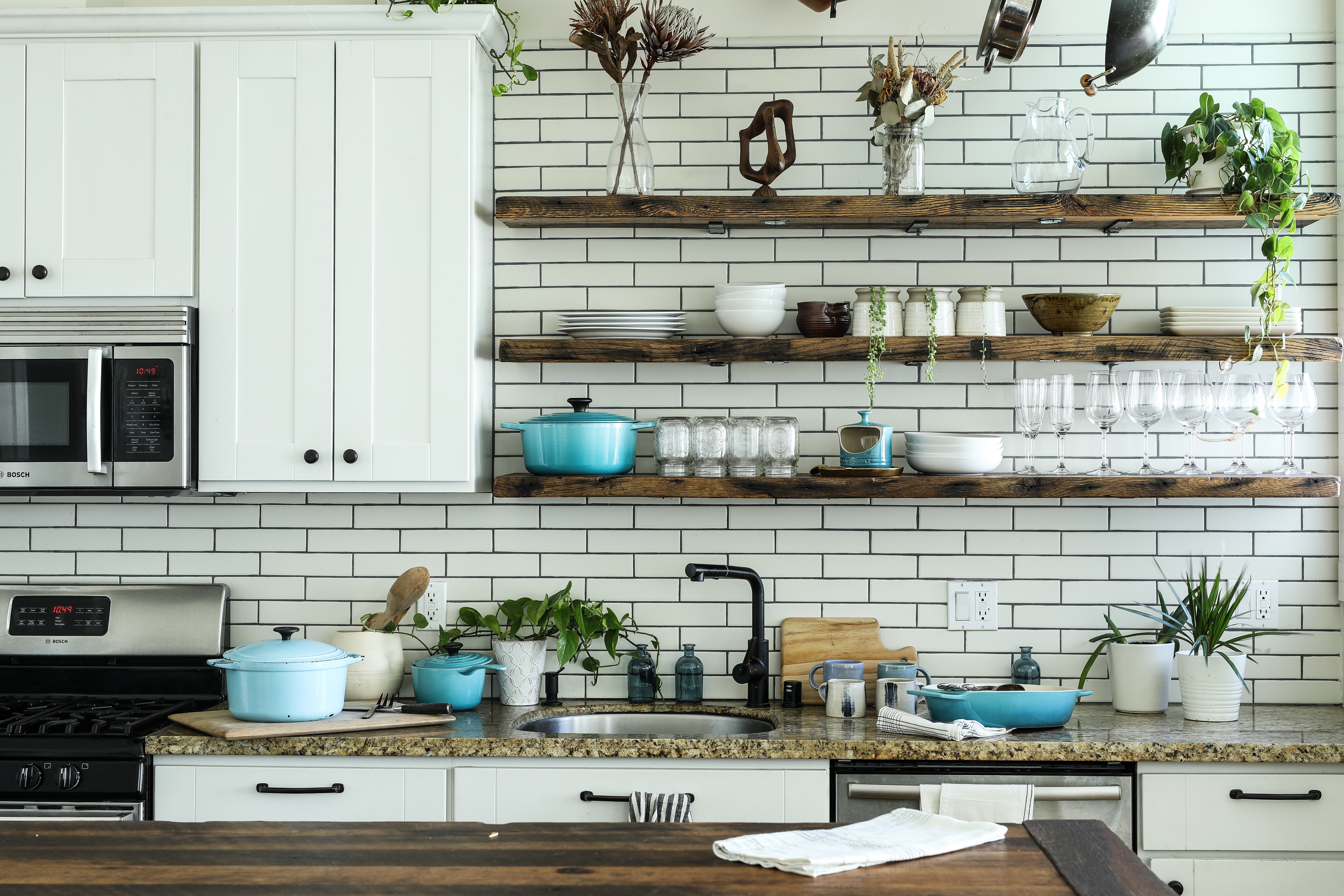
What is Easier to Clean — Porcelain or Ceramic Tile?
In general, ceramic tile is slightly cheaper than porcelain tile because porcelain tile is made differently, which makes it more durable and denser than ceramic tile.
When looking into kitchen backsplash cost comparison, take into consideration that the price of porcelain and ceramic tiles does not cover the cost of installation. Installation of ceramic or porcelain tile for the kitchen will depend on the complexity of the job and the surface where it’s installed.
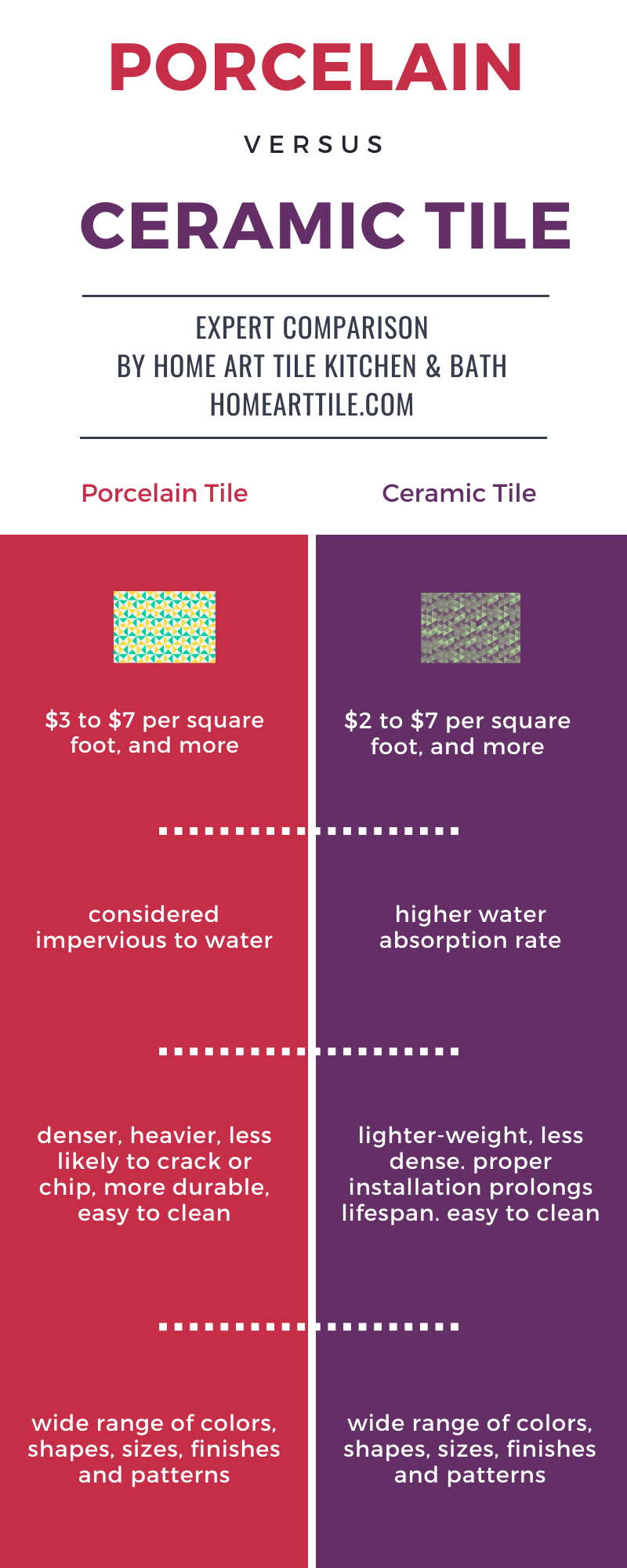
Porcelain or Ceramic Tile Infographic
Porcelain vs Ceramic Tile: Style
When it comes to appearance and design, there are no pros and cons for either of these two kitchen backsplash tile options. Ceramic and porcelain tiles are the two most common and most popular materials found in homes across the U.S. Both materials are durable, simple to install, affordable, easy to clean, and come in myriad options — an endless selection of various textures, colors, and styles.
Whether you decide to apply ceramic or porcelain tile as your kitchen backsplash, you have so many options before you. Not only will you protect your walls, but you will also be able to add a unique visual interest to your cooking space and bring a special kind of vibe, liveliness, and playfulness to your home. Not to mention personality.
Don’t be afraid to mix and match, to play and combine different colors, textures, and patterns, as well as shapes and sizes of tiles.
Some of the most popular kitchen backsplash options that come both as ceramic and porcelain tiles are subway, mosaic, and penny tiles.
Subway tiles are probably the most popular variety and a safe choice for many residential and commercial kitchens. Simple, elegant, pristine, uncomplicated — subway tiles will complete a range of kitchen styles, from classic and traditional to modern, contemporary decors.
Mosaic tiles come in many distinct, attractive patterns and colors. These small tiles stick to a mesh backing which makes them easy for installation.
Penny tile is great for adding more detail to your kitchen and when you wish to adopt a vintage style. Tiny tiles in light colors and various shapes come with a dark border that adds to their attractiveness and a touch of historical sophistication.
Customization options are available for each of these possibilities, whether they come as porcelain or ceramic material.

Mosaic Tiles Backsplash
If you’re looking to find a specific tile design for your modern white kitchen, explore our suggestions for kitchen backsplash ideas for white cabinets.
Ceramic vs Porcelain Tile Lifespan
When it comes to porcelain tile vs ceramic tile lifespan, we’re happy to say that both materials are durable, tough, and long-lasting when cared for and maintained as recommended by manufacturers and installers. However, as you already know, there are certain differences between them.
Porcelain tiles are harder and denser than ceramic tiles but this makes them more brittle and more likely to break during installation, structural shifting, or regular use than ceramic tiles.
Although ceramic tiles are less dense and thus softer than porcelain tiles, they are less likely to break than porcelain tiles, especially if they are properly maintained and regularly sealed.
So when it comes to the lifespan of porcelain or ceramic tile, we can say that whatever you choose, you won’t make a mistake. Just make sure to properly take care of these tiles, as required.
How to Choose the Right Backsplash Design
There are several considerations when choosing the ideal design for your kitchen backsplash. Here are some ideas to consider.
• Is this wall the right location for bright colors? Maybe you are looking for a pop of color in your kitchen. Perhaps you want a contrast to the rest of your kitchen decor. The backsplash area is the ideal location to implement your unique ideas.
• Will a busy pattern be best? Perhaps the rest of your kitchen includes monotone colors or simple designs. A busy ceramic or porcelain backsplash pattern provides a pleasant contrast. Maybe your countertops include beautiful natural veining. Perhaps your flooring is patterned. Then your porcelain or ceramic tile backsplash may benefit from a simple design. This design will not detract from the rest of your elegant decor.
• Dark colors or light colors? Perhaps you have chosen a contrast of dark and light finishes for your countertops, cabinetry, and flooring. Then your tile backsplash is an integral part of this design scheme. You can combine dark and light ceramic or porcelain tile for the kitchen backsplash. You can also choose a pattern that will complement or contrast with the elements of your choice.
A great way to get the right vision of your kitchen design with the new porcelain or ceramic tile backsplash is through a 3D visualization which we can provide you through our kitchen quoting software.
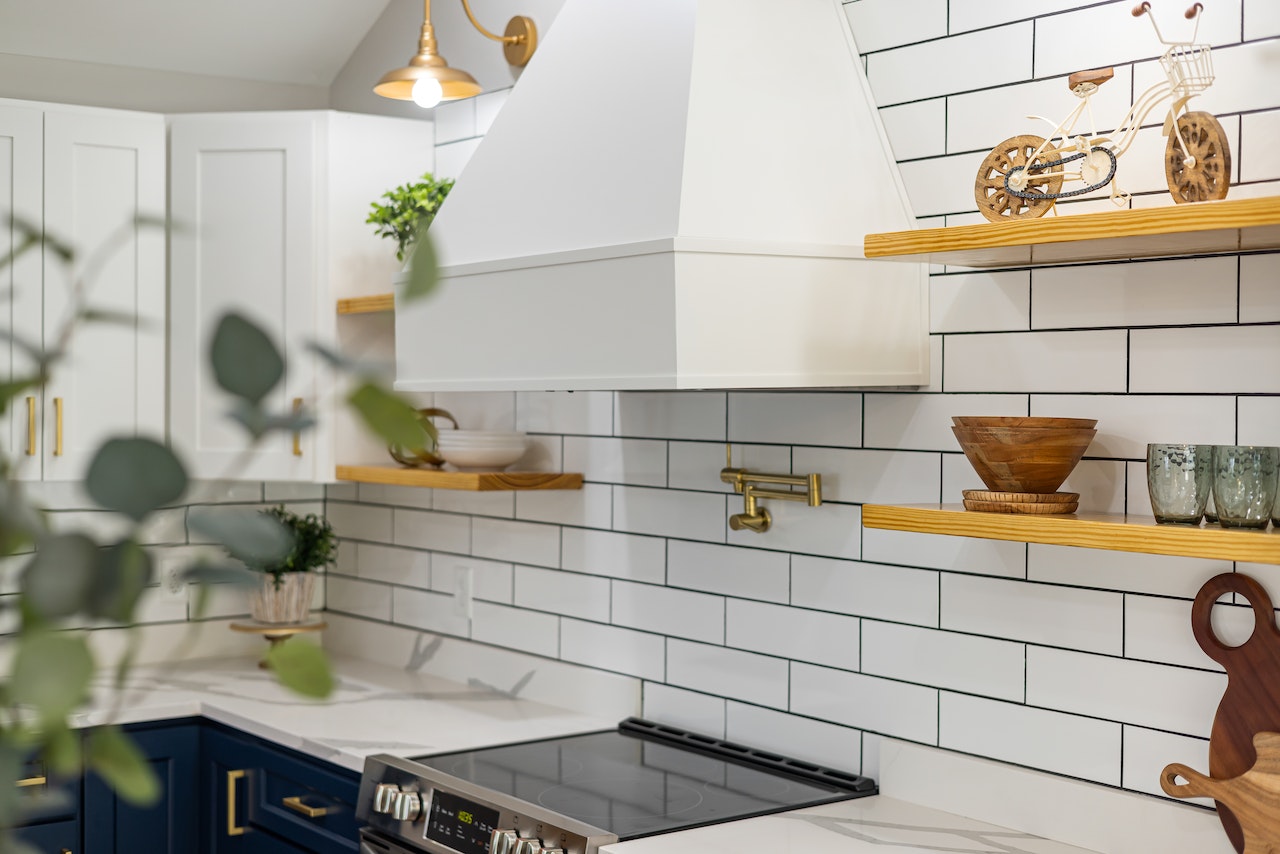
Should I Choose Porcelain or Ceramic Tile?
Porcelain tile for the kitchen backsplash is not subject to heavy traffic so it has only minimal waterproofing requirements. It’s the same for ceramic tiles. You can use your imagination when creating a design you wish to enjoy in your kitchen. Deciding between porcelain or ceramic tile is merely a matter of choosing the colors, styles, and patterns. You just need to decide which design and style you like best. The backsplash is the ideal location for a ceramic or porcelain tile installation that is too delicate for countertops or flooring.
Although porcelain and ceramic tiles have very similar appearances, you can choose between the two by relying on their differences. If you want a tile that is less porous, denser, chipping-resistant, scratch-resistant, and more hard-wearing, choose porcelain tile. It will cost a bit more than ceramic, but you’ll be happy you acquired the best possible quality. If your kitchen backsplash budget is smaller, go with ceramic tile backsplash. An endless selection of gorgeous designs will make your heart skip a beat. Ceramic tiles are highly recommended as a budget-friendly option not only for interior walls but also for kitchen floors.
Porcelain vs Ceramic Tile — What Are My Options?
The most popular backsplash materials are porcelain and ceramic tiles. Both can be colorful and versatile and therefore present a beautiful way to jazz up your kitchen with a decorative backsplash. When paired with matching, natural, or engineered stone countertops, the backsplash you chose can take center stage in the kitchen and provide a powerful pop of color.
When looking for the perfect porcelain backsplash or ceramic backsplash, try to see its surface as an artist’s canvas. Because it actually is. You don’t have to settle for a plain, ordinary look. Your choice will depend on what look you wish to achieve, but knowing that your options are endless will help you bring the best decision that you will be happy with for years to come
You can select porcelain or ceramic tile backsplash designs that showcase color, pattern, or texture. Although you can simplify the entire process and choose a safe option — a simple, white, classic subway tile, you can also use the opportunity and make a bold impact or a powerful contrast in your kitchen.
Don’t miss out on the opportunity to choose an option with more style, more elegance, and more functionality.
Walking into a tile showroom can be as overwhelming as it is inspiring. The displays are spectacular, but there are so many options, at so many price points. Before you run to the home center for a box of plain white subway tile—and miss out on the chance to make a bold impact in your kitchen—use Consumer Reports’ tile primer to get the lowdown on this durable, beautiful material. To help you shop, we’ve asked an expert panel of tile manufacturers, retailers, and installers for their best tips on the pros and cons of the most common types of tile.
Choose From a Variety of Beautiful Options
Small kitchen wall area, flexible tile options, and the opportunity to create a one-of-a-kind design increase your choices — what more do you need for a successful kitchen update? Your options with ceramic and porcelain wall tiles for the kitchen backsplash are nearly unlimited. A variety of custom or pre-determined designs can create a unique look for your kitchen. When looking for the perfect ceramic and porcelain tile for kitchen backsplashes, take a look at our beautiful tile product selection. We provide gorgeous options both in earth tones and vibrant, modern colors that will pop.
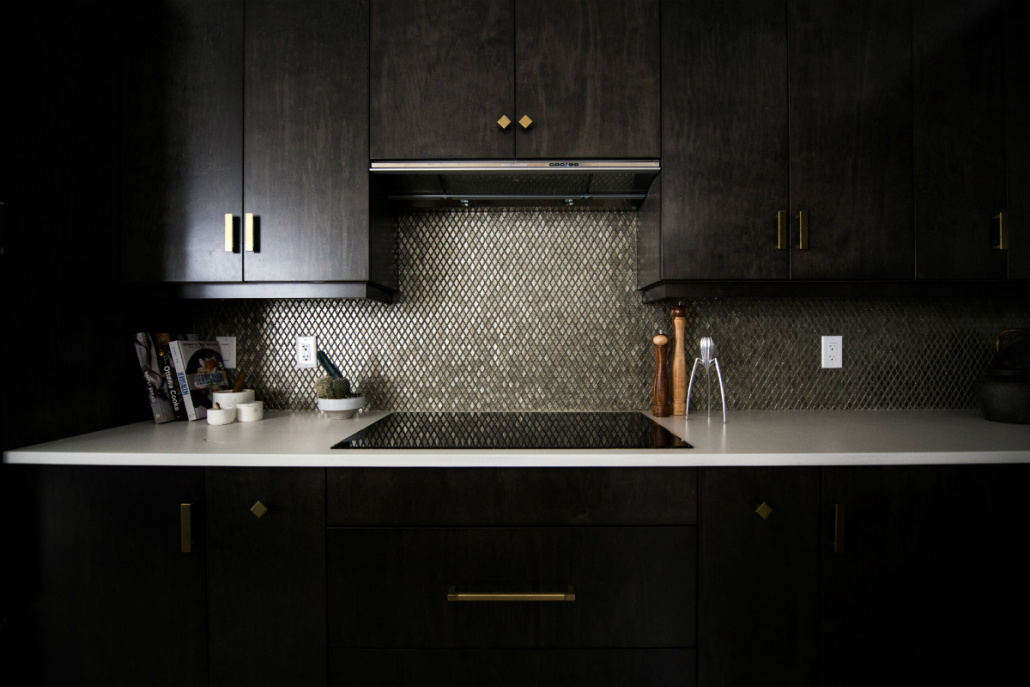
Elegant and sophisticated backsplash tile
When is Backsplash Tile Installed?
The backsplash is typically one of the finish items in the kitchen. It is important to have new countertops installed before adding the backsplash. The size and spacing of the porcelain or ceramic tile backsplash designs should be as precise as possible. A backsplash is one of the final items in the kitchen. Try porcelain or ceramic tile samples that will pair beautifully with your countertops. Think of how to pair them with other elements of the room as well, especially with kitchen cabinets.
2024 Ceramic Tile Trends
As we delve into the ceramic tile trends of 2024, a captivating blend of timeless appeal and contemporary innovation emerges. The year embraces a revival of traditional patterns, with encaustic and geometric designs taking center stage. These intricate patterns inject character and visual interest into spaces, reflecting a desire for personalized and unique aesthetics.
2024 also witnesses a surge in the popularity of large-format ceramic tiles. These expansive tiles not only create a sense of spaciousness but also offer a sleek and modern look. The trend extends to various applications, including floors, walls, and even countertops, providing a seamless and sophisticated appearance.

Color-wise, neutrals remain a steadfast choice, with warm earthy tones and serene pastels gaining momentum. These hues evoke a sense of tranquility and connection with nature, aligning with the broader trend of biophilic design.
In terms of texture, the year leans towards tactile surfaces, embracing three-dimensional and relief tiles. These textured ceramics not only add depth and dimension but also engage the sense of touch, enhancing the overall sensory experience of a space.
Overall, the ceramic tile trends of 2024 showcase a harmonious blend of classic motifs, contemporary aesthetics, and a commitment to sustainability, catering to a diverse range of design preferences while embracing innovation in materials and manufacturing techniques.
2024 Porcelain Tile Trends
The porcelain tile trends of 2024 unfold with a fusion of sophistication and functional innovation. Large-format porcelain tiles dominate the scene, creating expansive and seamless surfaces that exude a modern and luxurious ambiance. These tiles, often resembling natural materials like marble or concrete, contribute to a sense of opulence and timeless elegance.
Wood-look porcelain tiles continue to gain popularity, offering the warmth and charm of wood with the durability and low maintenance of porcelain. Advanced printing technologies ensure that these tiles authentically replicate the grains and textures of various wood species, appealing to those seeking a balance between aesthetics and practicality.

2024 witnesses a surge in textured porcelain tiles, embracing relief patterns and three-dimensional designs. This trend adds depth and visual interest to spaces, elevating the tactile experience within interiors.
Color-wise, neutral tones prevail, with a focus on calming hues and earthy shades. This aligns with a broader movement towards creating serene and nature-inspired environments in interior design.
Overall, the porcelain tile trends of 2024 showcase a harmonious marriage of timeless design elements and cutting-edge technology, providing homeowners and designers with versatile options that marry style and substance seamlessly.
Ceramic or Porcelain Tile for Kitchen Backsplash FAQs
Should I choose porcelain or ceramic tile?
It depends on what you’re looking for and what suits your needs better. If you’re looking for a more budget-friendly tile option that is durable and beautiful, and easier to install, then opt for ceramic tile backsplash. However, if you prefer highly sophisticated, expensive-looking, and easy-to-maintain tile, and you don’t mind hiring a professional installer for your kitchen backsplash, then choose porcelain tile.
Is porcelain or ceramic tile better?
There is no short answer to this. Please read the above text in this article to find out about porcelain backsplash pros and cons and ceramic backsplash pros and cons in detail, and then decide.
What is the best tile for the kitchen backsplash?
Ceramic tile comes first as the most popular tile for a kitchen backsplash. It is very easy to install, it’s remarkably versatile as it comes in numerous sizes, shapes, colors, designs, and styles, and it’s more budget-friendly than porcelain. If you seal your ceramic tile backsplash, it will be as durable as any porcelain tile backsplash but will be less likely to chip or break.
Do porcelain tiles chip easily?
Porcelain tiles are denser and harder than ceramic tiles and therefore are easier and more likely to chip and break. But even if that happens, the damage won’t be as visible as it would be with ceramic tile. If you’ve decided on porcelain tiles for your kitchen backsplash, just make sure to hire a professional installer and ensure the tiles are in good condition before applying them to the wall. The installer will make sure to lay them out correctly and with this minimize the possibility of breaking or chipping.
Does porcelain or ceramic last longer?
In general, based on their material and the manufacturing process, porcelain tiles can last longer. However, it all comes down to the maintenance and how you care for the. When it comes to installing kitchen backsplash, you can expect both porcelain and ceramic tile to last equally if you seal your ceramic tile backsplash.
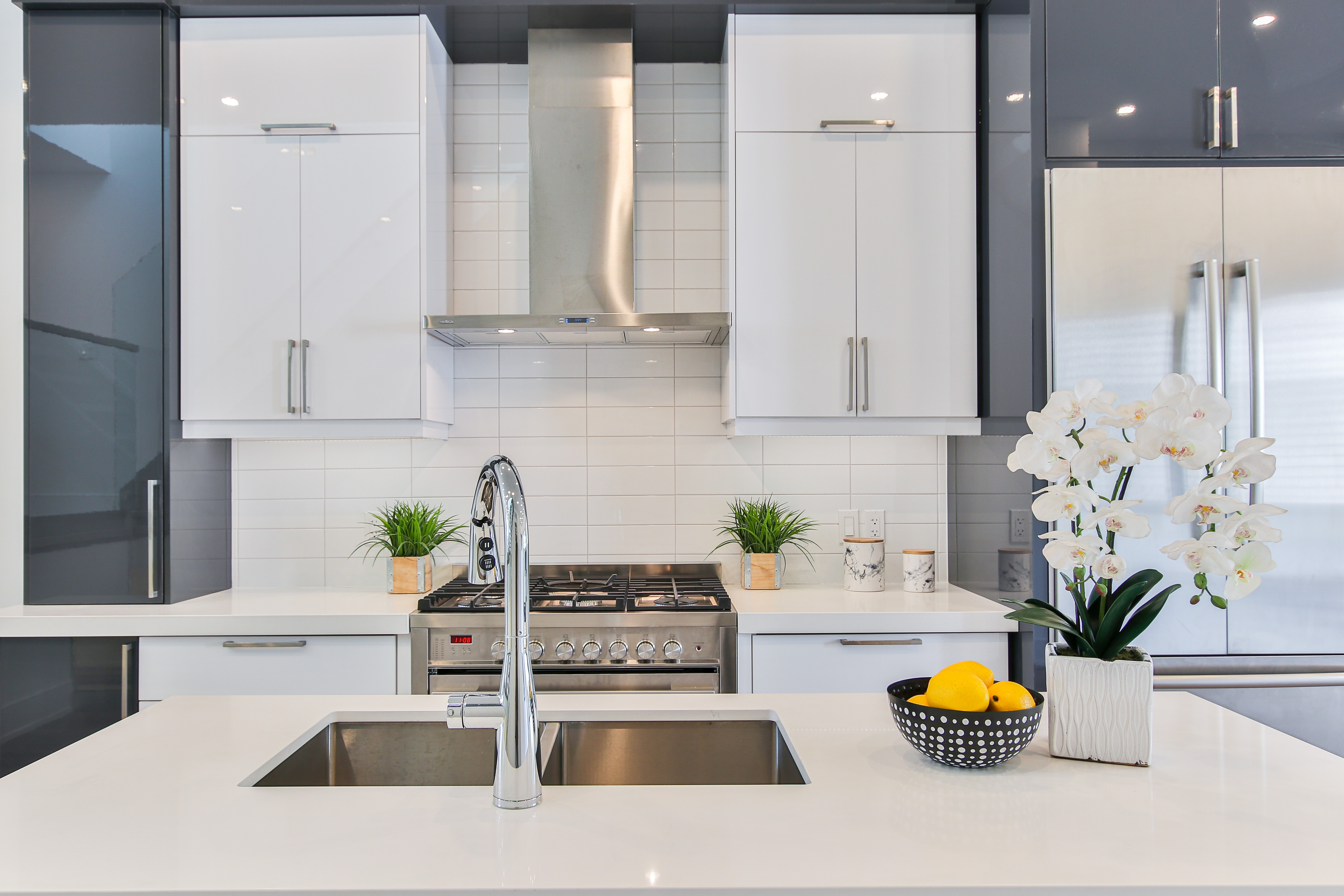
Have you decided on porcelain or Ceramic Tile?
Is ceramic tile still in style?
Yes, ceramic tile remains in style and continues to be a popular choice for various applications. Its enduring appeal is attributed to its versatility in design, offering an extensive range of patterns, colors, and textures. The durability of ceramic tile makes it suitable for high-traffic areas, especially in kitchens and bathrooms. Advances in manufacturing techniques also allow ceramic tiles to mimic the look of natural materials like wood or stone, contributing to their timeless and adaptable nature. With options ranging from classic subway tiles to contemporary geometric patterns, ceramic tiles provide homeowners with a versatile and enduring solution for flooring, backsplashes, and other surfaces in home design.
Is porcelain tile high-end?
Yes, porcelain tile is often considered high-end due to its exceptional durability and luxurious appearance. Porcelain tiles are denser and less porous than ceramic tiles, making them highly resistant to water, stains, and wear, which contributes to a longer lifespan. The manufacturing process involves high-pressure molding and firing at extremely high temperatures, resulting in a dense and hard material that is suitable for various applications. Porcelain tiles often emulate the look of natural stone or wood, adding to their high-end appeal. While porcelain tiles may come with a higher upfront cost, their longevity, low maintenance, and upscale appearance make them a premium choice for flooring, countertops, and other design elements.
Let Us Help You Decide Between Porcelain vs Ceramic Tile in 2024
When choosing between porcelain or ceramic tile, make sure to choose an option that fits your style, your kitchen space, and your budget. Choosing between these two options is safe because both of them will successfully withstand the test of time and will serve you wonderfully for many years to come. With regular cleaning and light maintenance, they will always look their best.
Choosing a backsplash for your kitchen is an important, personal choice. You need to make sure you and your family enjoy seeing the unique pattern every morning. Whether you’re preparing food, drinking coffee, or having breakfast with your family, the backsplash will probably be in your face all the time. So make sure you choose colors, patterns, and finishes you truly enjoy.
The good news is, that both porcelain and ceramic tiles offer an endless range of options for you to choose from. The kitchen backsplash is an excellent opportunity to express your personal style and feature a unique, custom look that no one else has.
Home Art Tile Kitchen & Bath located in Queens, NY is one of the largest porcelain and ceramic tile showrooms in the NY area. We stand by our premium selection of porcelain tile and ceramic tile backsplash design options, while our highly skilled and experienced designers will be happy to help you create the perfect focal point for your kitchen. Contact us today for a free estimate.

